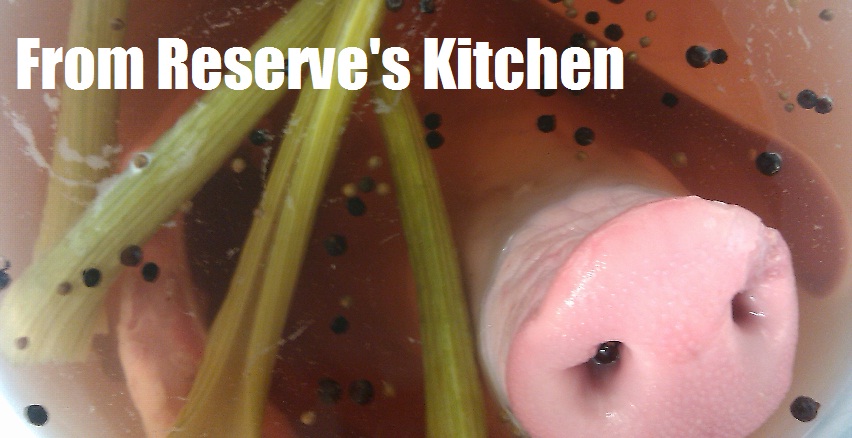 |
| Quiche Lorraine. Mangalitsa bacon, onion, and Pennsylvania Noble |
Like a lot of chefs my age, I've spent many hours with Thomas Keller's books. There are techniques from The
French Laundry Cookbook and
Bouchon that are still in use in my kitchen today. A few years ago at Journeyman, we decided to check out Keller's quiche recipe and we liked it so much, that after a few minor tweaks to "make it our own" it went on the menu where it was universally beloved.
Keller describes quiche as "the essence of luxury", a statement that sparked our interest in trying his out. The quiche we knew was typically a soggy, frozen pie crust filled with spongy, curdled eggs and a few poorly cooked garnishes throughout. This is not French quiche, he explained. French quiche is deep, two inches, and is a quivering, light, luminous custard spiked with flavorful, seasonal, and carefully prepared ingredients. This is typical of Keller's recipes. Simple and familiar things are granted enlightenment through an understanding of a dish at its essence, through its history, or possibly a reexamining of its role in modern cooking. Eating this quiche for the first time was like finding a long lost brother.
Brandon, my current sous and butcher, spent a few years as the "day guy" at Journeyman, and is intimately familiar with this quiche. He has made dozens. He has lived through the frustrations of finicky pate brisee, the horror of opening the oven door to find your batter leaking, or leaked and baked solid to the sheet tray, and the not so momentary hatred of a not so competent line cook turning his back on it for a minute too long, only to find the buttery, crisp crust burned to charcoal. This quiche is a labor of love, time consuming and demanding. Give any phase of its production less than your full attention and it can fail. But when it's right...
Brandon, Green and myself have talked fondly now and then about quiche. Brandon began wondering if there could be a place on our menu at Reserve for it. As he is prone to do, he prowled the internet late at night, learning what he could about its history and found that in the days of the guilds in France, where the art of charcuterie was, if not born, formalized, it was actually the right of the charcutier to produce and sell quiche. That's right, quiche is charcuterie. Not pastry, not brunch. Charcuterie. I suppose it makes sense. Pate means "paste" in French, and back in the day referred to anything (though usually meat) baked in a pastry crust and eaten cold. Quiche is of course most commonly eaten hot these days, but this one is a knockout cold. It has therefore joined our terrine and sausage on our charcuterie menu as a nod to its history.
After some time spent damming his leaking quiche with corn flour, Brandon has mastered it. Like Keller, we have a taste for the classics: Florentine (spinach, cheese, and shallot) and Lorraine (pictured above and on the menu now). Our quiche Lorraine contains our house made mangalitsa bacon, caramelized Visser Farm onions, and a blockbuster American artisanal cheese (in lieu of Gruyere) called Pennsylvania Noble. It is a cheddar in style, inoculated with a white mold -- the same mold responsible for brie and camembert -- during the last two months of aging. The custard is made with Hilhof organic cream and milk and eggs from S & S Farm. Thanks to these great producers, Keller's mentoring, and Brandon's obsessive-compulsive nature, it is outstanding. I won't describe it further. Come in and taste for yourself.
Keller ends his introduction to quiche by saying "I'm sorry America has lost the quiche - or never really had it. I'd like to see it return to its proper form, and for more people to know about it and appreciate it." We're in, chef. We will do our best to spread the good word.




